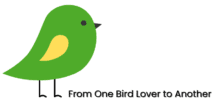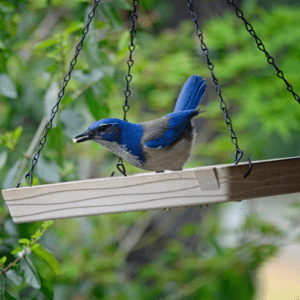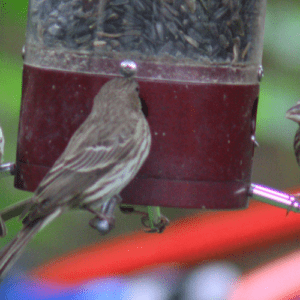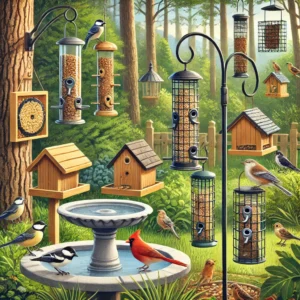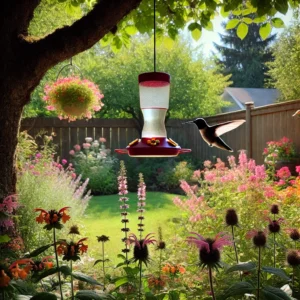Maintaining a clean hummingbird feeder is crucial for the health and well-being of these beautiful birds. Knowing how often to change hummingbird nectar, especially during the warmer months, can prevent health issues and keep hummingbirds returning to your yard. Let’s explore how often to change the nectar, what happens if you don’t, and a recipe for the best homemade hummingbird nectar.

More about hummingbird feeders:
Where to Place Hummingbird Feeder: Best Practices 2024
How to Keep Ants Out of Hummingbird Feeders
How Often to Change Hummingbird Feeder
How often to change hummingbird nectar is largely influenced by the weather. Hot weather can spoil nectar quickly, while cooler conditions slow the process. Here are some general guidelines for how often to change hummingbird feeders:
In hot weather (85°F or higher): Change every 1-2 days. High temperatures cause nectar to ferment faster.
In mild weather (65°F-85°F): Change every 3-5 days.
In cooler weather (below 65°F): You can change it every 5-7 days, but always check for signs of spoilage, like cloudiness or mold.
After rain: Check the feeder immediately, as rain can dilute the nectar and lead to quicker spoilage.
Whether you’re asking how often to change hummingbird water or how long hummingbird nectar lasts, these factors all contribute to keeping your feeder clean and your birds healthy.
What Do You Put in Hummingbird Feeders?
Making your hummingbird nectar is easy, and it eliminates the risk of harmful additives or dyes found in commercial products. Here’s the best recipe for homemade nectar:
Ingredients:
- 1 cup of white granulated sugar
- 4 cups of water
Instructions:
- Boil the water to remove impurities.
- Remove from heat and stir in the sugar until completely dissolved.
- Allow the nectar to cool to room temperature before filling your feeder.
- Store extra nectar in the refrigerator for up to one week.
Note: Never use honey, artificial sweeteners, or red food dye, as these can harm hummingbirds.
How Long Does Hummingbird Nectar Last?
The shelf life of hummingbird nectar depends on various factors like temperature and storage conditions. Here’s a breakdown of how long hummingbird nectar lasts:
At room temperature: In hot weather, nectar lasts 1-2 days, while in mild weather it can last up to 5 days.
In the fridge: Homemade hummingbird nectar can last up to one week when stored in the refrigerator.
Store-bought nectar: Check the label, but typically, store-bought nectar lasts about as long as homemade.
Understanding how long hummingbird nectar lasts is crucial for maintaining a healthy feeding environment.
What Happens If You Don’t Change the Nectar on Time?
Leaving nectar in the feeder for too long can pose significant risks to hummingbirds. Here’s what happens if you don’t change the nectar on time:
Fermentation: High temperatures cause nectar to ferment, leading to yeast growth. Fermented nectar can make hummingbirds sick.
Mold Growth: Mold thrives in neglected feeders and can cause infections in hummingbirds.
Pest Attraction: Spoiled nectar attracts ants, bees, and wasps, which can contaminate the food and keep hummingbirds away.
Bird Avoidance: Hummingbirds are sensitive to spoiled nectar and may stop visiting your feeder altogether if it’s not changed regularly.
Factors Influencing Nectar Freshness
Several factors can impact how long hummingbird nectar stays fresh. Here are the most important ones:
Temperature: Warmer temperatures speed up fermentation, meaning you need to change nectar more frequently.
Sunlight Exposure: Direct sunlight heats the feeder, causing nectar to spoil faster. To extend freshness, place your feeder in a shaded area.
Feeder Design: Some feeders are more resistant to contamination. Opt for designs that are easy to clean and keep pests like ants and bees at bay.
Humidity: High humidity can cause nectar to become sticky and promote mold growth. Keeping the feeder in a well-ventilated spot can help.
How to Tell if Nectar Has Gone Bad
Knowing when your hummingbird nectar has spoiled is essential. Here are the signs to look for:
Cloudiness: Fresh nectar is clear, so any cloudiness indicates spoilage.
Mold Growth: Visible black spots or any signs of mold mean it’s time to change the nectar.
Sour Smell: If the nectar smells fermented or sour, it’s no longer safe for hummingbirds.
Sticky Feeder: A sticky texture on the feeder indicates the sugar is breaking down and the nectar is spoiling.
How to Clean Your Hummingbird Feeder
Regularly cleaning your feeder is just as important as changing the nectar. Here’s how to clean your feeder effectively:
- Disassemble the feeder: Take apart all components for thorough cleaning.
- Wash with hot water: Use a brush and hot water to scrub the feeder, avoiding soap as it can leave harmful residue.
- Disinfect if needed: Soak the feeder in a 1:9 bleach-to-water solution for a deeper clean, then rinse thoroughly.
- Rinse well: Make sure to remove all cleaning product traces.
- Air dry: Allow the feeder to air dry completely before refilling.
Final Thoughts on How Often to Change Hummingbird Feeder
Maintaining fresh nectar and a clean hummingbird feeder is essential for keeping these vibrant birds healthy and frequenting your yard. By following these guidelines on how often to change hummingbird food, you can ensure a safe and inviting feeding environment.
